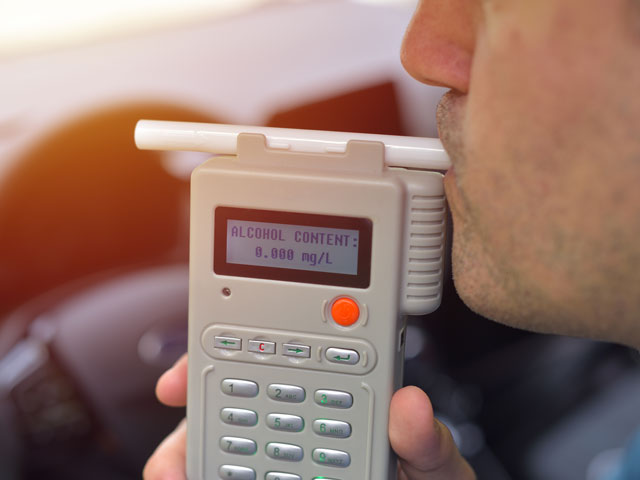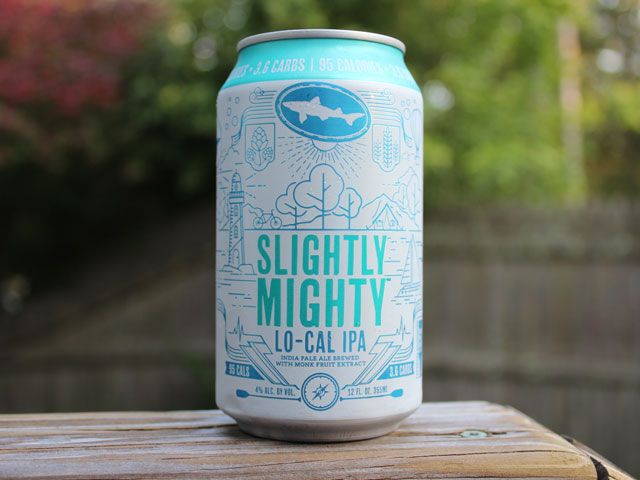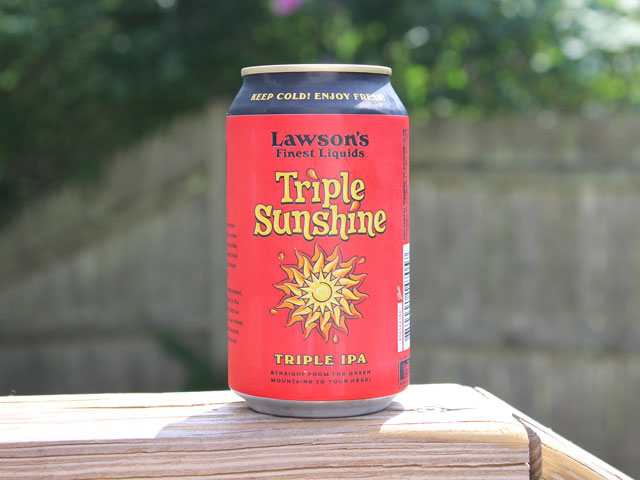ABV 101 - A Guide to the Alcohol by Volume of Craft Beer, Hard Liquor & Wine
Everything to know about ABV. How much alcohol is in a standard serving. The history of measuring the content of alcohol. And, of course, the risks of consuming too much alcohol.
Written by CraftJack | Updated | 9 min read
Interesting Tools
- Beer BrüMate Hopsulator
- Brewing Northern Brewer Beer Making Kit
- Spirit Crystal Whiskey Glasses
- Wine Wine Decanter/Aerator

Whether you’re looking for just the right flavor of beer or one that’s light or heavy on its alcohol content, knowing its alcohol by volume (ABV) can help. Beer labels always note the alcohol by volume, but what, exactly, does it mean?
In addition to proof, ounces, and nutritional information, the ABV of a craft beer, wine, or liquor is one of several metrics that can help you determine what you put in your body when you consume alcohol.
Table of Contents
- What is ABV?
- History of ABV
- How Do You Measure ABV?
- How Does ABV Affect Taste?
- What Are the Effects of ABV?
- Alcohol Content of Different Beverages
- How Long Does Alcohol Stay in Your System?
- Intoxication: Signs & Symptoms
- The Risks of Abusing Alcohol
What Is ABV?
Alcohol by volume, or ABV, measures how much alcohol is in an alcoholic drink or product. Specifically, ABV measures ethanol, the organic compound made by wort that goes through a fermentation process to create alcohol. Although it’s not required by law for beverage manufacturers to list the ABV of their drinks on their labels, many do.
What’s the benefit of knowing the ABV of the drinks you consume? The ABV number tells you the level of alcohol content in each drink. A glass of beer with 2% ABV has less alcohol content than a glass of wine with 10% ABV. You can conclude that you’ll probably feel the effects of the higher percent ABV wine faster than you would with the lower percent ABV beer.

ABV can affect more than just how you feel after drinking an alcoholic beverage, though. The number can also tell you how strong that beverage might taste in terms of alcohol content. Think of the flavor of liquor, which usually has a higher ABV than beer, compared to the flavor of a lite beer with a low ABV.
Some people confuse ABV with proof, but these are different metrics. While both measure the alcohol content in a beverage, the proof number is exactly twice the alcohol by volume number. A drink with 20 percent alcohol ABV will be 40 proof, for example. This number can also help you determine how potent your beverage is in terms of its alcohol content.
Alcohol Acronyms & Abbreviations
ABV is one of a set of acronyms used in the alcohol world. This set includes:
- BAC (Blood Alcohol Content)
- IBU (International Bittering Units)
- OG (Original Gravity)
- SRM (Standard Reference Method)
History of ABV
We can trace the process of measuring the alcohol content in beverages back to the 1700s before experts developed tools for the process. Initially, people soaked gunpowder in a drink sample to decide whether it was an acceptable strength. If the gunpowder burned in the drink, it proved itself to be successful, leading to the term “proof.”
This method wasn’t entirely reliable, though, as various grains used to create beer and other drinks affected how the gunpowder burned. After decades of developing better systems for proof measurements, experts developed a more useful test that measured water’s specific gravity in an alcoholic beverage. Armed with this information, drink manufacturers could calculate the alcohol by volume and its proof.
ABV is the most common metric we see used today in the United States. Still, you may see a proof number on spirits.
The United States uses a different calculation than other countries for proof, though, with a simple calculation of two times the ABV. The UK still relies on its final gravity calculation, while other countries use an alcohol by weight (ABW) measurement by distilling, condensing, and weighing alcohol.
How Do You Measure ABV?
The alcohol industry no longer relies on the historical method of placing gunpowder in drinks to measure its alcohol content. Thankfully, the process has evolved to make testing the amount of alcohol in a drink more accurate and straightforward.
Today, it’s a commonplace practice to use a hydrometer or alcoholmeter to calculate this number. An alcoholmeter is designed for distilled spirits to measure pure ethanol in a drink. You use an alcoholmeter after the fermentation process is complete. A hydrometer measures the density of water throughout the fermentation process to determine alcohol content, and you can use it on any type of alcoholic drink.
How Does ABV Affect Taste?
You might notice that a drink with a higher ABV number tastes different than a low-ABV drink. That’s because alcohol content can undoubtedly impact the flavor of a drink.
Think about dark beers, for example. Using the Standard Reference Method (SRM) chart for color reference, consider a beer that sits around 20 on the chart. This beer will likely have a higher ABV than a beer closer to number 4 on the SRM chart, and it will probably taste much stronger than the lighter beer.
Drinks with higher alcohol content are usually more bitter than low-ABV drinks. We measure bitterness with the International Bitterness Units (IBU) scale. Again, the dark 20-SRM beer is probably going to taste more bitter than the light 4-SRM beer. The same goes for darker wines, which lean toward the bitter side instead of the sweeter or fruitier side of white wines.
Read on to learn how to open wine without a corkscrew.
What Are the Effects of ABV?
How you feel after drinking a pint of beer, a glass of wine, or a shot of liquor depends on factors like your gender, age, weight, metabolism, and how often you drink. Still, it’s safe to assume that a high-ABV drink is going to affect your body quicker than a low-ABV drink.
You might drink two or three 5% ABV beers before you start feeling its effects. But it may just take you one shot of a 40% ABV liquor to feel woozy because your body can’t process that much alcohol as quickly.
Alcohol Content of Different Beverages
Depending on the type of alcoholic beverage you consume, you’ll notice a different average range of ABV numbers listed on the container. That’s because some drinks tend to contain more alcohol than others.
Here’s a breakdown of the alcohol by volume you can expect to see on different types of alcoholic beverages:
Beer Alcohol Content
Before the craft beer explosion in the United States, the abv measurement of beer was about 4-5%. This was common in your mass produced lagers - an example being those pilsners brewed in St. Louis and Colorado, and even some lighter fare, like blonde ales. Imperial Stouts & IPAs, Belgian quads, and other specialty beers have really driven the top end higher of late, much to the enjoyment of beer drinkers everywhere.
Beers by ABV Range (3-13%)
- 3% Beers
- 4% Beers
- 5% Beers
- 6% Beers
- 7% Beers
- 8% Beers
- 9% Beers
- 10% Beers
- 11% Beers
- 12% Beers
- 13% Beers

Examples of high abv beers
Microbreweries and homebrewers alike have been pushing the ceiling further and further. Here are a few double digit craft beers:
- 10.2% ABV : Triple Ecstasy (Widowmaker Brewing)
- 10.5% ABV : Triple Sunshine (Lawson's Finest Liquids)
- 11.0% ABV : Good Night Moon (Greater Good Imperial Brewing Company)
Wine Alcohol Content
Wine tends to have a higher alcohol content than beer, which is why it may only take a few sips of a glass of wine for you to start feeling its effects. Generally, wine has between 10% and 15% ABV, with many of them clustering around the 11% to 13% mark.
The type of wine makes a difference, though. White wines are usually lower in alcohol than red wine. Still, there are some white wines - California Sauvignon Blanc, Chardonnay, and French Sauternes, for example - that have a high alcohol content of 14% or more.
The wines that top the ABV list include California Zinfandel, Italian Amarone, and several varieties of Port wine, which commonly goes all the way to 18% to 20% ABV.
Hard Liquor Alcohol Content
Liquor tips the scales with the highest alcohol content, although there are many different kinds of liquor with a wide ABV range. Liquor can range from 20% to 60% ABV and beyond. Expect lighter, fruitier drinks to be a bit lower in alcohol by volume than darker, heavier drinks. This includes liqueurs.
Vodka usually tops the list for having the highest amount of alcohol, potentially as high as 95% ABV. In the current COVID world, we'd understand if you purchased booze with a high alcohol level.
Question: How much does a handle of Tito's cost?
How Long Does Alcohol Stay in Your System?
How long alcohol stays in your system depends mostly on your body weight and how much alcohol you drank. Other factors, like your gender, metabolism, and how much food you consumed before, during, or after drinking, determine how long a test can detect alcohol in your body.
There are several types of alcohol tests available, and each one detects alcohol for different lengths of time. A blood test detects alcohol for 6 to 12 hours, for instance, but a hair test can show alcohol in your body for up to 90 days after drinking.
Breath and saliva tests can generally show alcohol usage for 12 to 24 hours. A urine test can range between 12 hours and five days, depending on the exact type of urine test you use.
Intoxication: Signs & Symptoms
Intoxication is a condition caused by drinking too much alcohol. Intoxication can cause a wide range of symptoms that affect everything from how you speak to how you think and act.
Physical Symptoms
You’ll probably start feeling the physical effects of intoxication before anything else. Sweating and clammy skin are common, and your whole body may begin to feel warm from your body metabolizing the alcohol. As a result, your face will start to flush and feel warm.
Your eyes may start to look red, too, because oxygen can’t make its way to your blood cells as readily with alcohol in your system. Nausea and vomiting can also occur after you’ve had too much alcohol. Other symptoms include loss of balance and coordination, incoherent speech, and blacking out.
Then there's the potential headache or migraine the next day.
Behavioral Symptoms
Other people may know that you’re intoxicated before you realize it based on your behavior. Drinking too much alcohol causes tell-tale behavioral symptoms, like being unresponsive to what’s going on around you or showing confusion when someone asks you a question or when you attempt to respond.
You may also become more outgoing, angry, or sad when you’re intoxicated. Alcohol can cause severe mood swings that can vary from person to person. You might also speak louder, become drowsy, or enter a tipsy phase when you’re intoxicated.
Cognitive Symptoms
Alcohol causes the inability for you to think clearly, which means that you’ll have impaired judgment when you’re intoxicated. It may be more challenging to make sound decisions and react to situations as quickly as you would without alcohol in your system.
In severe cases, you could experience a loss of consciousness, leading to potentially severe dangers to your safety.
The Risks of Abusing Alcohol
Regularly consuming more than the recommended amount of alcohol is known as alcohol abuse. When you abuse alcohol, you could end up with damaging effects on your body that are often much more serious than short-term intoxication.
Alcohol abuse leaves long-lasting effects on your body and brain. One of the most severe symptoms your body can experience is liver damage. Alcohol-related liver disease (ARLD) causes inflammation of the liver due to excessive drinking.
When the liver swells, scarring can occur, making the organ less efficient at breaking down your body’s nutrients and filtering toxins from the body. Eventually, scarring can lead to complete liver failure. ARLD can also cause hypertension and brain abnormalities due to toxin buildup.
Heavy drinking can also harm your heart. Alcohol abuse has links to hypertension (high blood pressure), which strains your heart muscles. Both long-term heavy drinking and binge drinking may also lead to heart arrhythmias (irregular heart rhythms).
If these problems go unchecked, they could lead to alcoholic cardiomyopathy, which happens when the heart can’t pump blood efficiently. Symptoms of this condition include dizziness, body weakness, extreme fatigue, and swelling.
Many people who abuse alcohol can also become victims of an alcohol use disorder, like alcoholism. This condition may affect your ability to function in society. You might skip going to work, withdraw from friends and family, or develop depression. People with an alcohol use disorder have difficulty stopping their drinking habits even if they want to.
Alcohol abuse isn’t always caused by long-term drinking, though. Short-term binge drinking is also abusing alcohol - like chugging beer or partaking in drinking games. These drinking bouts can cause short-term side effects, like alcohol poisoning and blackouts. Binge drinking can also lead to risky behaviors, like operating a car or engaging in violence, because it impairs your judgment.
Your Guide to ABV
ABV can indicate how a drink might taste, which is beneficial for you if you don’t love intense, deep, bitter flavors. Choose low-ABV beverages if you prefer sweet and light flavors.
Understanding what ABV is and how it works in your favorite drinks can also help you determine how a drink might affect your body. If you’re planning a night out with friends or family, this information can keep you in check when drinking because you’ll know what you’re putting into your body. You can even learn to measure the alcohol level of drinks you consume at home using a hydrometer to keep your alcohol consumption in moderation.
